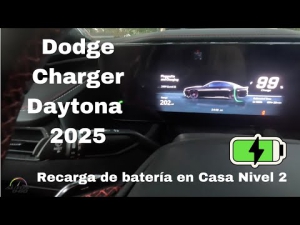Ford Mustang vs. Dodge Challenger: A Muscle Car Battle for the Ages
The Ford Mustang is arguably the most popular muscle car of all time. Its rich history includes many unique designs and power upgrades, still going strong for its latest generation. But the Mustang didn’t earn its esteem easily: It still must compete with many other impressive muscle cars, including the Dodge Challenger.
Dodge released one of the Mustang’s biggest rivals, the Challenger, five years after Ford debuted its pony car. Although not as popular as the Stang, the Challenger has been known to best its rivals in some respects. So let’s settle the score: Is the Ford Mustang or the Dodge Challenger the superior car?
Ford Mustang cars through the years
Ford first unveiled the Mustang in 1964 with three capable engines, including two V8s. Only one year later, the legendary Ford Mustang GT with a record-breaking top speed rolled off the assembly line. It got a major redesign in 1968, with improved exterior elements and two new engines.
The car’s popularity really boomed in 1970 when the Boss Mustangs debuted. The Boss 351 is still regarded as one of the fasted pony cars in history, reaching 60 mph in 5.8 seconds. The third-generation Mustang introduced the iconic Fox body platform, plus its first convertible.
Ford almost discontinued the Mustang in the mid-’80s, but the 1984 Mustang SVO saved the iconic muscle car. It boasted better handling and performance thanks to upgraded components such as stiffer springs and bigger disc brakes. Ten years later, the Ford Mustang entered its fourth generation with the timeless galloping horse emblem on the grille.
The Mustang would continue to see considerable power upgrades throughout the ensuing years. Ford also release limited modern versions of the Mustang Shelby GT350, winning the horsepower battle against the Camaro Z/28. The Mustang is currently in its sixth generation and has sold over 10 million units.
Dodge Challenger cars throughout history
Dodge actually developed the Challenger to compete against the Mustang, CarCovers reports. Like the Mustang, the Challenger also offered a healthy selection of powerful engines. However, it faced some hurdles in the early ’70s due to its bare-bones interior and unappealing grille design.
Dodge eventually discontinued the Challenger in 1974, but it would make its return four years later. Though it had less powerful engines than the competition, it was still one of the automaker’s most popular models. It left the scene in 1978 for an extended 30-year absence.
The modern Dodge Challenger’s exterior design remains mostly faithful to its classic incarnation, but it got a much-needed power boost. This generation also saw the debut of the Hellcat, R/T Scat Pack, and legendary Demon models.
Challenger vs. Mustang reliability
According to Consumer Reports, the Ford Mustang has a spotty reliability history. It currently holds an average rating, but it had the lowest scores from 2014 to 2016. Owners reported premature failure of both the engine and the transmission and minor components like the climate system.
Because the Dodge Challenger is a relatively newer model, Consumer Reports has limited reliability data on it. However, it has a perfect rating for the 2018 and 2021 model years. Premature brake wear was the only severe issue owners reported.
Is a Mustang better than a Challenger?
Regardless of reliability, the Ford Mustang and Dodge Challenger have above-average customer satisfaction scores from Consumer Reports. The Mustang tends to be slightly more popular, with almost perfect marks for styling and performance. A higher percentage of Mustang drivers would also buy the car again compared to current Challenger drivers. Though Ford’s muscle car still has some less reliable models, its high average scores after several years of data are impressive.
Mustang vs. Challenger exterior
The Ford Mustang has evolved extensively over the years, but most drivers are happy with its current exterior design. The pony emblem remains on every trim, and the GT models benefit from some stylish racing stripes. Ford redesigned the 17-inch wheels and added some new paint options for 2020.
By contrast, the Dodge Challenger has a unique boxy grille it shares with its muscle car sibling, the Charger. The Challenger is also slightly longer than the Mustang, giving the former more interior space, the Dodge website shows. And both come with optional rear spoilers, though the Mustang’s is more visible.
Mustang vs. Challenger engines
The Ford Mustang’s base engine is the most powerful 2.3-liter turbo-four in its class. Higher trims offer a choice among two V8s, a 5.0-liter option, and a supercharged 5.2-liter.
The Dodge Challenger’s base engine is a 3.6-liter V6. This car also has more optional engines than the Mustang, including a 5.7-liter and 6.4-liter Hemi. Its most powerful offering is a supercharged 6.2-liter Hemi V8, reserved for the SRT Hellcat Redeye and SRT Super Stock.
Mustang vs. Challenger hp
The Mustang’s base motor makes 310 hp and 350 lb-ft of torque but jumps to 330 hp with the EcoBoost package added. The 5.0-liter V8 produces 460 or 480 hp depending upon the model, plus 420 lb-ft of torque. Both engines pair with a six-speed manual transmission.
The supercharged V8, exclusive to the Mustang Shelby GT500, harnesses 760 hp and 625 lb-ft of torque. It pairs with a seven-speed dual-clutch automatic transmission. This model also comes standard with a racing-tuned Magneride suspension, Brembo brakes, and stickier racing tires.
The Dodge Challenger’s base V6 makes 303 and 268 lb-ft of torque, standard on the first two trims. Its 5.7-liter V8 produces 375 hp and 410 lb-ft of torque. And the upgraded 6.4-liter Hemi on the Challenger R/T Scat Pack provides 485 hp and 475 lb-ft of torque.
However, the SRT Hellcat’s supercharged 6.2-liter V8 makes 717 hp and 656 lb-ft of torque. The most powerful trims have high-output versions of this engine, capable of either 797 or 807 hp. Torque remains the same at 707 lb-ft.
Most Challengers get an eight-speed automatic transmission, but a few models can have a six-speed manual. And unlike the Ford Mustang, Dodge Challenger models can have all-wheel drive.
Mustang vs. Challenger fuel economy
Even for a muscle car, the Ford Mustang has surprisingly decent gas mileage. The 2.2-liter fastback with the automatic transmission is the most efficient at 21/32 mpg city/highway. The 5.0-liter V8 gets 16/25 mpg at best, while the supercharged V8 can get about 14/21 mpg. Swapping out the manual for the automatic knocks the Shelby GT500’s gas mileage down to 12/18 mpg city/highway.
The Dodge Challenger’s base V6 is slightly less efficient, earning 19/30 mpg city/highway. The 5.7-liter V8’s mileage dips to 16/25 mpg, and the 6.4-liter V8 dips by 1 mpg each. The supercharged Hellcat engines get the worst mileage, as low as 12/18 mpg.
Mustang vs. Challenger interior
The Ford Mustang can seat two or four riders on comfortable seats in a nearly luxe cabin. The infotainment system in the base model is lacking, so upgrading to the SYNC 3 interface s a good idea.
The Dodge Challenger can seat up to five, but some reviewers say its interior design is boring. Still, it’s roomy for its class and comes with more standard features than the Stang.
What handles better, Mustang or Challenger?
The Ford Mustang’s turbo-four predictably loses power approaching the redline, but its other two motors have no trouble under heavy throttle. However, Autotrader says the EcoBoost’s cornering ability is enhanced thanks to its lighter engine. The steering wheel provides nice feedback in each driving mode, and the brakes kick in quickly when needed. There’s no noticeable body roll, and the ride is surprisingly smooth, even with a track-ready suspension.
Car and Driver says the Dodge Challenger’s base engine isn’t as agile and can be too unruly for two-lane highways. The optional engines provide satisfying power boosts, though the six-speed manual shifts clumsily at times. The ride is comfortable, but the steering wheel doesn’t engage drivers as much as the Mustang’s.
Challenger vs. Mustang: Daily driver comparison
Both muscle cars can handle well off the track, but the Ford Mustang is slightly better in that regard. It also gets better gas mileage, especially with the base engine. However, the Mustang’s second row is cramped, and it doesn’t have the biggest cargo area.
The Dodge Challenger’s second-row seating boasts the most generous legroom in its segment — plus, it can seat one more rider than the Mustang. It has almost three extra cubic feet of storage space over its Ford rival, a little more than 16 cubic feet in total. However, the Ford Mustang has some advanced safety features standard, whereas the standard Dodge Challenger has only a backup camera.
Is a Mustang faster than a Dodge Challenger?
The base-model Mustang EcoBoost can reach 60 mph in 5.3 seconds, MotorTrend reports. Though that’s faster than the Challenger’s base offering, the two optional engines are more satisfying. The Mustang GT can go from 0 to 60 mph in as little as 3.9 seconds. The range-topping Shelby GT500 can reach that speed in just 3.3 seconds.
The standard Dodge Challenger can also hit 60 mph in around five seconds. The Hellcat engines can push the car to 60 mph in 3.5 seconds and top out at 199 mph. The latest Shelby GT500 is slightly slower, with a top speed of 186 mph.
Which year Dodge Challenger is best?
According to Hagerty, the 2018 Dodge Challenger SRT Demon is one of the most memorable models. Its supercharged Hemi V8 makes 840 hp with high-octane fuel, giving it a 0-60-mph time of 2.3 seconds. It comes with an eight-speed automatic transmission plus a trans brake for more satisfying take-offs.
Car and Driver says the Demon can clear the quarter-mile in 9.65 seconds at 140 mph, but it boasts a maximum speed of 168 mph. This Challenger SRT also comes with two sets of drag radials, adjustable dampers, and wide front wheels that can lift at launch.
Phil Long Ford notes that the Ford Mustang Shelby GT500 is a worthy competitor, especially when equipped with the optional Carbon Fiber Track pack. It adds carbon fiber wheels and wings, along with splitter wickers and adjustable strut mounts.
Should I buy a Challenger or Mustang?
If price is your biggest concern, the Ford Mustang lineup is cheaper overall than the Dodge Challenger (minus optional packages). The Challenger has the larger powertrain variety and the most powerful engine. However, most critics agree the Challenger’s ride quality doesn’t offer the same refinement as the Ford Mustang’s.
Daily drivers might appreciate the Dodge Challenger more for its wider dimensions, AWD capability, and larger cargo and cabin space. The Challenger doesn’t come in a convertible style like the Mustang, but it has a more distinctive exterior appearance.
Overall, both muscle cars are powerful in their own ways, so you can’t go wrong with either. But in the end, the Mustang is arguably a better car for the money. And it’s certainly the more popular pony car among consumers.
RELATED: The 2021 Ford Mustang Mach 1 Is at Its Best in Track Mode
The post Ford Mustang vs. Dodge Challenger: A Muscle Car Battle for the Ages appeared first on MotorBiscuit.


 : Nathan C.
: Nathan C. : Josh R.
: Josh R. 




